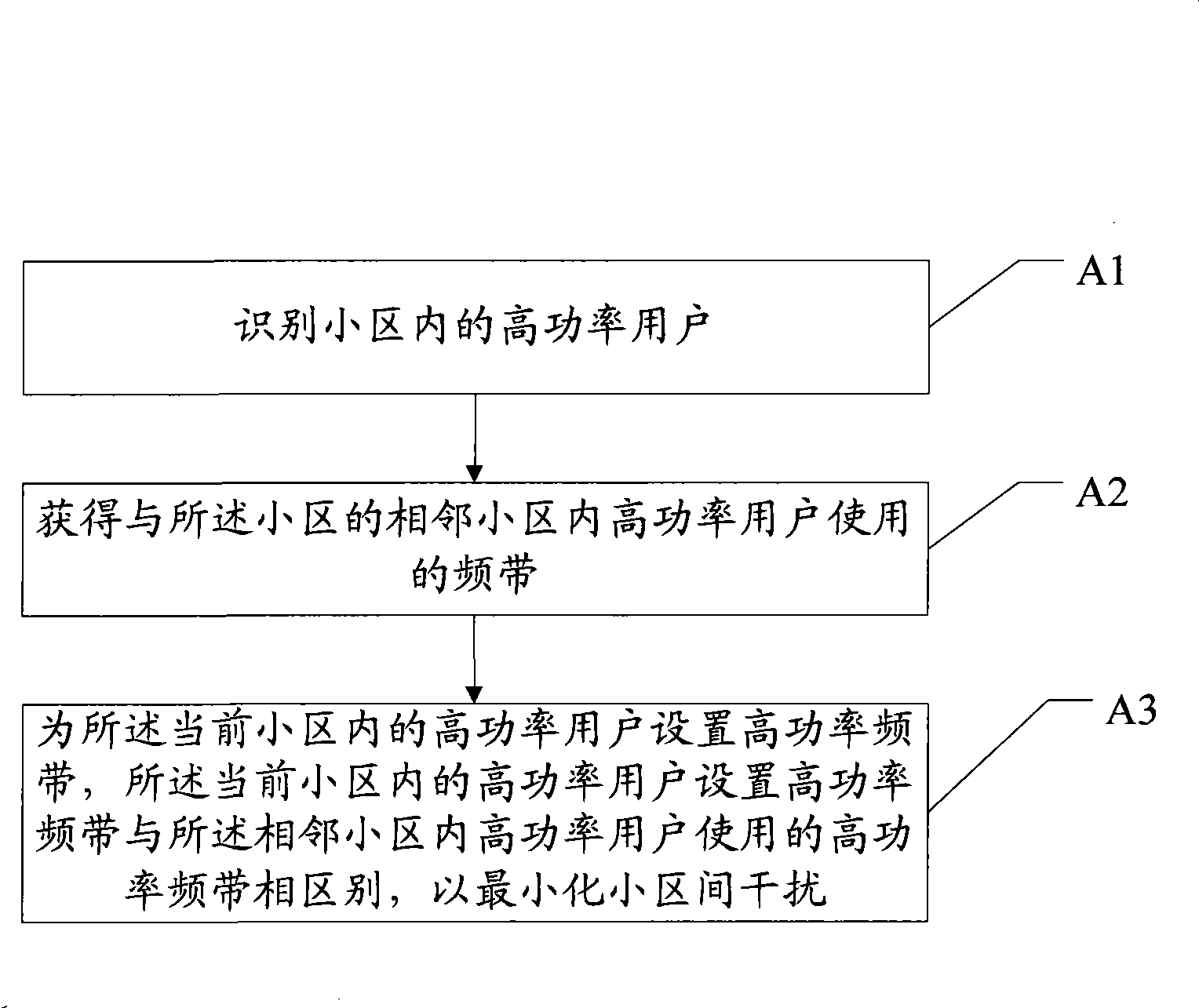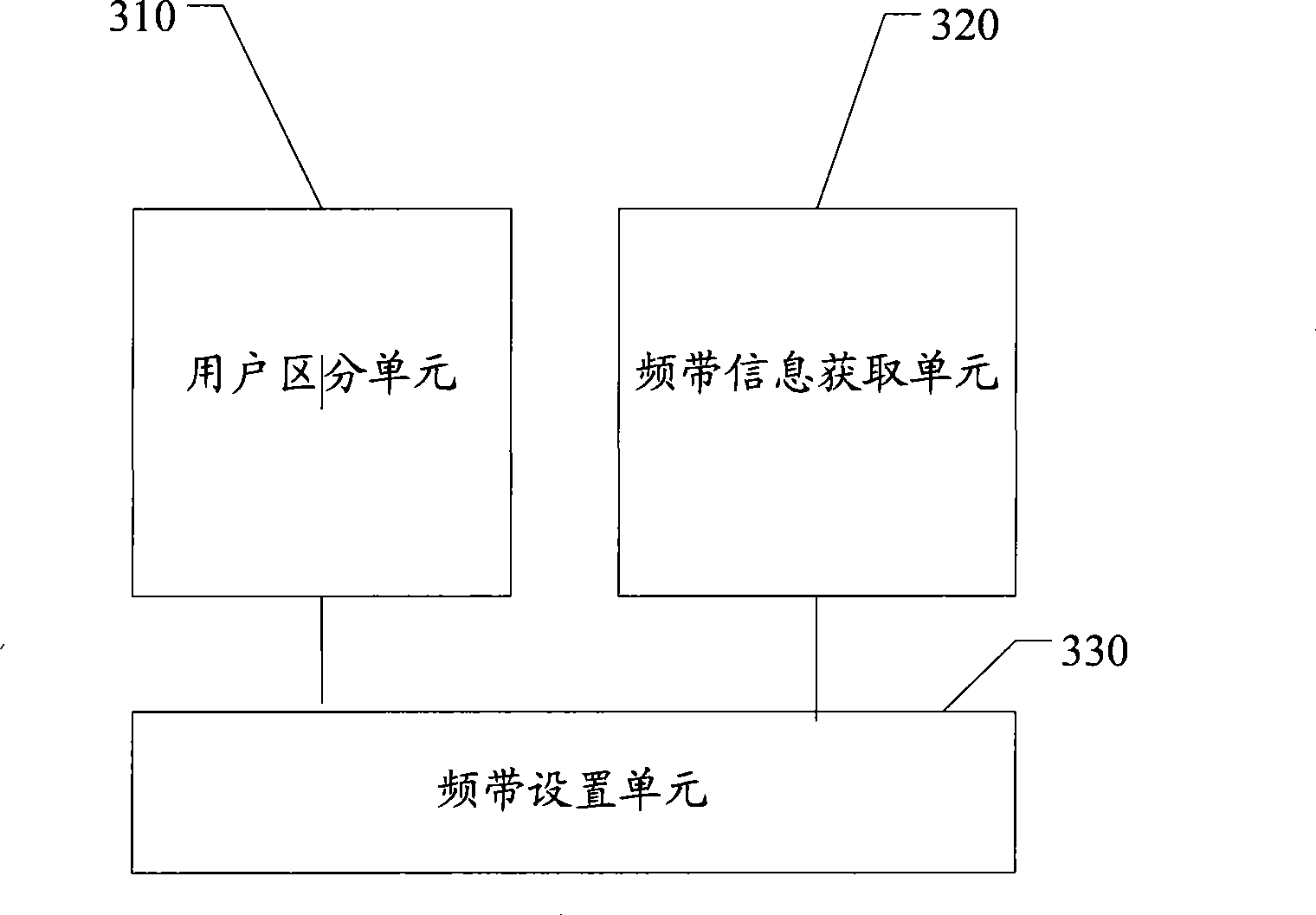Downlink interference collaboration method and base station
An interference coordination and base station technology, applied in the field of communication, can solve problems such as unsatisfactory inter-cell interference processing effect, achieve the effects of rationally distinguishing users by power, reducing co-frequency interference, and improving communication quality
- Summary
- Abstract
- Description
- Claims
- Application Information
AI Technical Summary
Problems solved by technology
Method used
Image
Examples
Embodiment 1
[0023] Embodiment 1. A downlink interference coordination method, the flow chart of which is as follows figure 1 shown, including:
[0024] A1, identifying high-power users in the current cell;
[0025] In the embodiment of the present invention, identifying high-power users in the current cell can be achieved in the following ways:
[0026] The base station obtains a preset power threshold;
[0027] Judging whether the power allocated to the user is higher than the preset power threshold, and if so, confirming that the user is a high-power user.
[0028] It can be understood that the power threshold can be preset, and the specific threshold can be set in consideration of factors such as cell capacity, geographical characteristics, and power settings of adjacent cells, and the specific threshold does not constitute a limitation of the present invention.
[0029] A2. Obtain a high-power frequency band used by high-power users in adjacent cells of the current cell;
[0030] ...
Embodiment 2
[0066] Embodiment 2, a downlink interference coordination method, the flow chart is as follows figure 2 shown, including:
[0067] B1, the base station distinguishes high-power users and low-power users in the cell; the specific distinction is based on a power threshold, which will not be described here.
[0068] B2, the base station judges whether to trigger the event of increasing the high power frequency band; if yes, proceed to step B3; if not, proceed to step B4;
[0069] Since the high-power frequency band is limited, the scheduler counts the total number of frequency bands used by the high-power users scheduled on the low-power frequency band during each scheduling. If the total number exceeds a certain threshold (system bandwidth × A%) ), which triggers an increase in high power band event. Referring to the analysis in Embodiment 1 above, if the total number of frequency bands used by high-power users scheduled on the low-power frequency band exceeds a certain thres...
Embodiment 3
[0084] Embodiment 3, a base station, the structural diagram is as follows image 3 As shown, it includes: a user distinguishing unit 310, a frequency band information obtaining unit 320 and a frequency band setting unit 330;
[0085] A user distinguishing unit 310, configured to identify high-power users in the current cell;
[0086] A frequency band information obtaining unit 320, configured to obtain a high-power frequency band used by high-power users in neighboring cells of the current cell;
[0087] The frequency band setting unit 330 is configured to set a high power frequency band for the high power user in the current cell; the high power frequency band set by the high power user in the current cell is different from the high power frequency band used by the high power user in the adjacent cell Frequency bands are differentiated to minimize inter-cell interference.
[0088] further reference Figure 4 , is a schematic structural diagram of a fourth base station acco...
PUM
 Login to View More
Login to View More Abstract
Description
Claims
Application Information
 Login to View More
Login to View More - R&D
- Intellectual Property
- Life Sciences
- Materials
- Tech Scout
- Unparalleled Data Quality
- Higher Quality Content
- 60% Fewer Hallucinations
Browse by: Latest US Patents, China's latest patents, Technical Efficacy Thesaurus, Application Domain, Technology Topic, Popular Technical Reports.
© 2025 PatSnap. All rights reserved.Legal|Privacy policy|Modern Slavery Act Transparency Statement|Sitemap|About US| Contact US: help@patsnap.com



